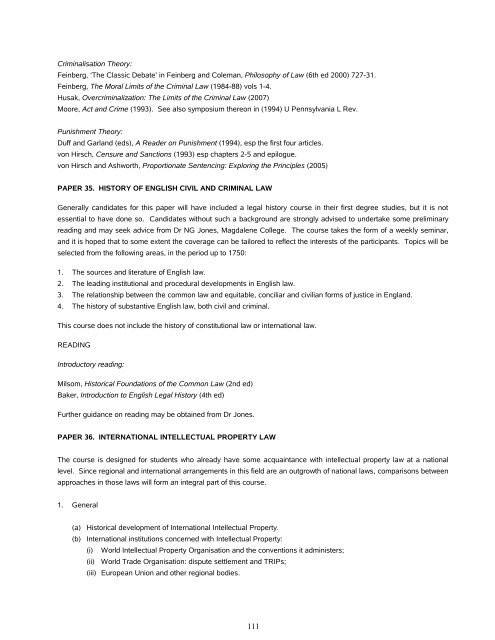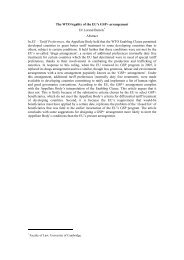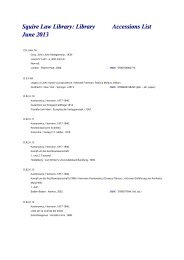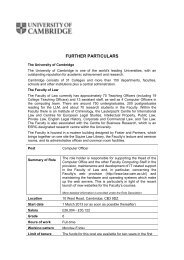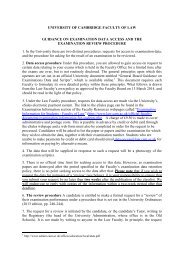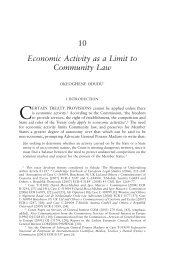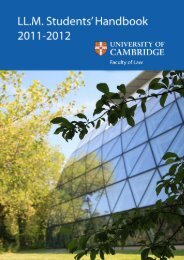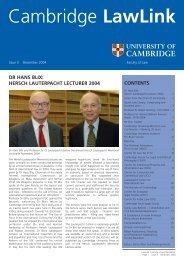Contents - Faculty of Law - University of Cambridge
Contents - Faculty of Law - University of Cambridge
Contents - Faculty of Law - University of Cambridge
Create successful ePaper yourself
Turn your PDF publications into a flip-book with our unique Google optimized e-Paper software.
Criminalisation Theory:Feinberg, ‘The Classic Debate’ in Feinberg and Coleman, Philosophy <strong>of</strong> <strong>Law</strong> (6th ed 2000) 727-31.Feinberg, The Moral Limits <strong>of</strong> the Criminal <strong>Law</strong> (1984-88) vols 1-4.Husak, Overcriminalization: The Limits <strong>of</strong> the Criminal <strong>Law</strong> (2007)Moore, Act and Crime (1993). See also symposium thereon in (1994) U Pennsylvania L Rev.Punishment Theory:Duff and Garland (eds), A Reader on Punishment (1994), esp the first four articles.von Hirsch, Censure and Sanctions (1993) esp chapters 2-5 and epilogue.von Hirsch and Ashworth, Proportionate Sentencing: Exploring the Principles (2005)PAPER 35. HISTORY OF ENGLISH CIVIL AND CRIMINAL LAWGenerally candidates for this paper will have included a legal history course in their first degree studies, but it is notessential to have done so. Candidates without such a background are strongly advised to undertake some preliminaryreading and may seek advice from Dr NG Jones, Magdalene College. The course takes the form <strong>of</strong> a weekly seminar,and it is hoped that to some extent the coverage can be tailored to reflect the interests <strong>of</strong> the participants. Topics will beselected from the following areas, in the period up to 1750:1. The sources and literature <strong>of</strong> English law.2. The leading institutional and procedural developments in English law.3. The relationship between the common law and equitable, conciliar and civilian forms <strong>of</strong> justice in England.4. The history <strong>of</strong> substantive English law, both civil and criminal.This course does not include the history <strong>of</strong> constitutional law or international law.READINGIntroductory reading:Milsom, Historical Foundations <strong>of</strong> the Common <strong>Law</strong> (2nd ed)Baker, Introduction to English Legal History (4th ed)Further guidance on reading may be obtained from Dr Jones.PAPER 36. INTERNATIONAL INTELLECTUAL PROPERTY LAWThe course is designed for students who already have some acquaintance with intellectual property law at a nationallevel. Since regional and international arrangements in this field are an outgrowth <strong>of</strong> national laws, comparisons betweenapproaches in those laws will form an integral part <strong>of</strong> this course.1. General(a)(b)Historical development <strong>of</strong> International Intellectual Property.International institutions concerned with Intellectual Property:(i) World Intellectual Property Organisation and the conventions it administers;(ii) World Trade Organisation: dispute settlement and TRIPs;(iii) European Union and other regional bodies.111


